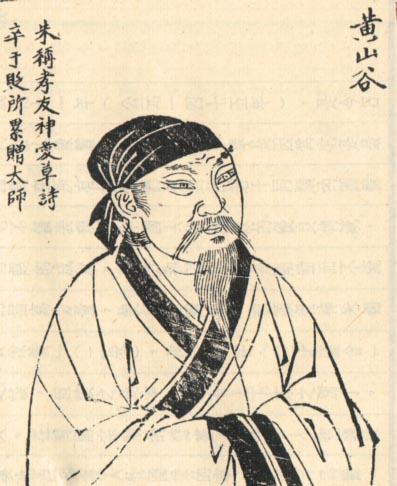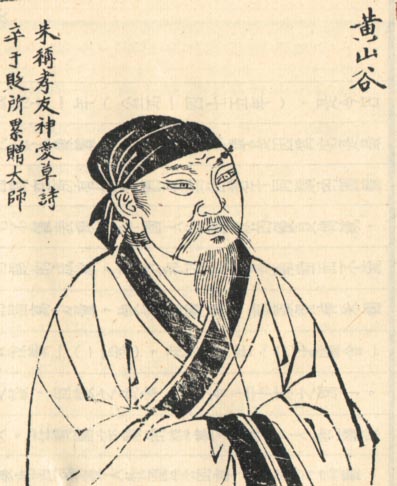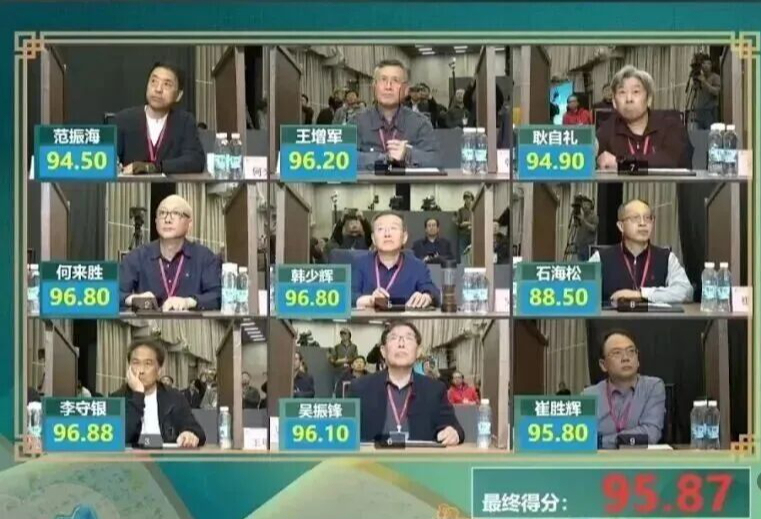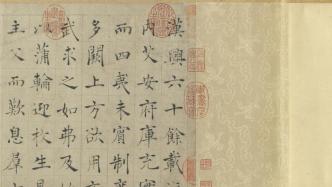
Calligraphy is a unique art in the Han cultural circle. It has been a system in Chinese cultural traditions for a long time, and it is naturally applied in daily life, eliminating the barriers between ancient and modern times. The development of Chinese calligraphy from ancient times to the present has always been a subject of concern to everyone.
The Paper has learned that the National Palace Museum in Taipei’s series of exhibitions “The True Seal in Pen and Ink – Calligraphy Appreciation” has recently changed its exhibits to include Wu Cailuan’s “Book of Tang Yun” from the Tang Dynasty, Chu Suiliang’s “Book of Praise to Ni Kuan” from the Tang Dynasty, Su Shi’s Song Dynasty There are a total of twelve (groups) masterpieces of calligraphy from past dynasties, including "Ode to the Red Cliff in front of the Book", "Book Ruler Slips" by Mi Fu of the Song Dynasty, and "Song of Ancient Mirrors Translucent in Calligraphy" by Xian Xian of the Yuan Dynasty. Among them, the calligraphy of Wu Cailuan's "Book of Tang Yun" reveals the neatness and exquisiteness of Tang Dynasty regular script, with wide and comfortable knots and thick strokes. It should be a representative work of calligraphy in the late Tang and Five Dynasties; The posture is open and the writing force is vigorous, making it one of the masterpieces of regular script handed down from generation to generation.

Song of Translucent Ancient Mirrors Written by Yuan Xian Yushu, National Treasure (Part)
The Qin and Han dynasties were a critical period for the development of calligraphy. On the one hand, the phenomenon of divergent writing and inscription of ancient Chinese scripts in large seal scripts for three generations was unified, resulting in the standard calligraphy style of small seal scripts. On the other hand, the emerging calligraphy style of official script that sprouted in the Spring and Autumn Period and the Warring States Period also evolved from seal script at this time. Jian Sheng matured and developed into a popular calligraphy style in the Han Dynasty. As the trend of the times moved toward simplicity and speed, official script continued to evolve and differentiate, resulting in the formation of cursive script, running script and regular script. The gradual change of calligraphy style does not happen overnight. Therefore, after entering the Wei, Jin, Southern and Northern Dynasties, transitional calligraphy styles and mixed calligraphy styles mixed with various styles can be seen from time to time, which shows that calligraphy changes over time before it can establish its own style in structure and brushwork. law.
The Sui and Tang Dynasties were another critical period. Political unification brought about the convergence of calligraphy styles from the north and the south, and the development of calligraphy became more complete. From then on, regular script became a popular calligraphy style throughout the ages. After the Song Dynasty, in order to preserve the long-term spread of the calligraphy of previous sages, engraving became increasingly popular. However, people in the Song Dynasty were not satisfied with inheriting tradition. Their calligraphy orientation expressed personal temperament and captured their natural interests.
After the Yuan Dynasty, the calligraphy tradition of Jin and Tang Dynasties was continued. However, the idea of not being bound by tradition also became active, and in the Ming Dynasty, an atmosphere of freedom emerged. The calligraphy of the Ming Dynasty was extremely complex, and cursive writing was particularly lively and free, which was in contrast to those who followed traditional laws at that time. During this period, calligraphers who highlighted their individuality and unique style also found their own path to realize themselves and were not swallowed up by the trends of the times.
Since the Qing Dynasty, the ancient seal scripts of the Qin and Han dynasties have been unearthed one after another, which can be said to be a unique blessing. Under the influence of the pragmatic academic atmosphere, people in the Qing Dynasty rubbed the stele tablets and interacted with the engravings. The vision of calligraphy development was able to connect the past and the present, and they were finally able to learn from the past and innovate in both seal script and official script to lead a new direction.
Tang Wu Cailuan Shu Tang Yun
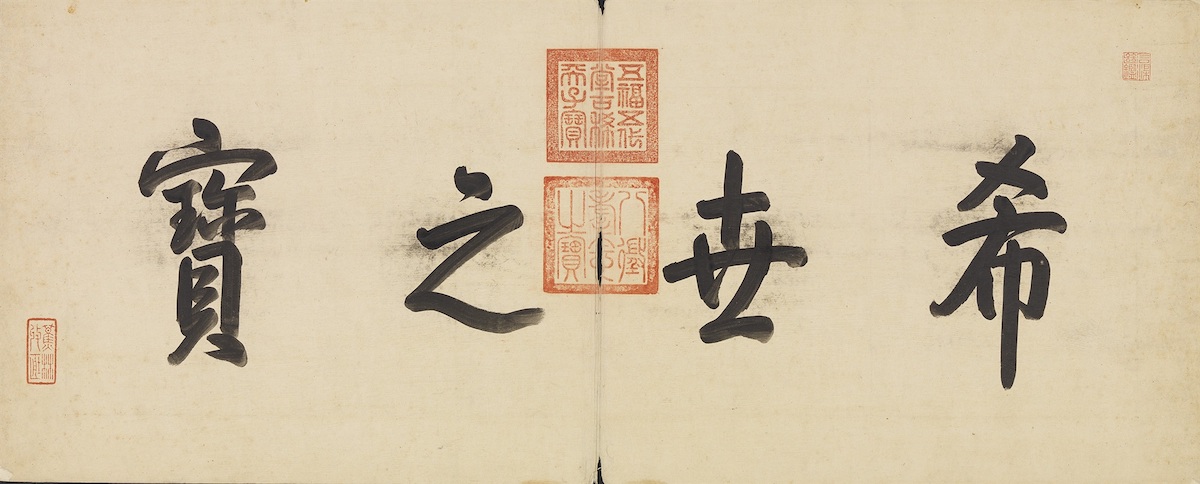
Wu Cailuan's calligraphy of Tang Dynasty in Tang Dynasty (partial part)
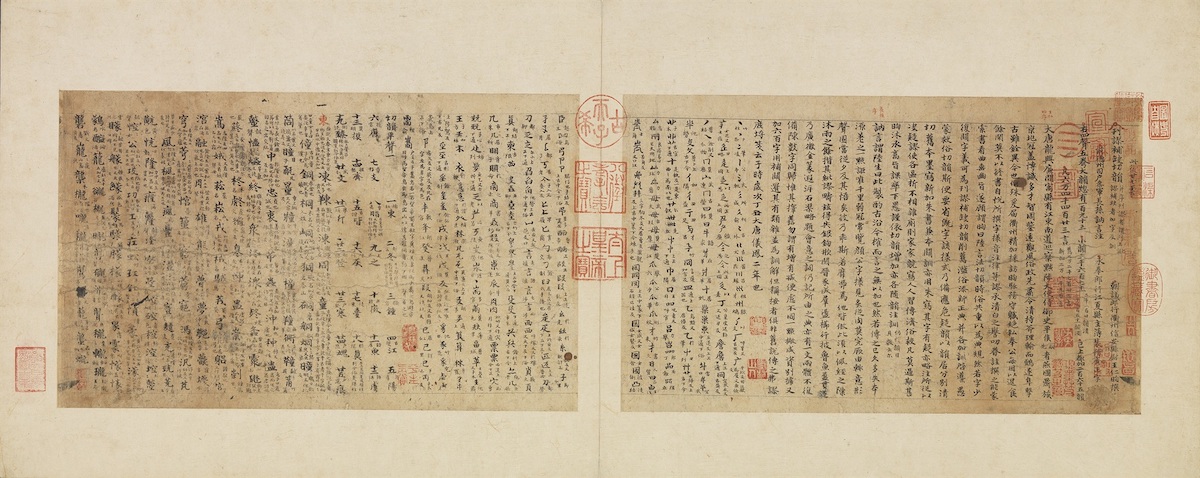
Wu Cailuan's calligraphy of Tang Dynasty in Tang Dynasty (partial part)
During the reign of Emperor Wenzong of the Tang Dynasty (809-840), Wu Cailuan (active in the ninth century), a "fairy", was said to make a living by copying rhyme calligraphy. Because her calligraphy was broad and unique, she was valued by collectors of all ages. Therefore, most surviving Tang manuscripts on rhymes are named after Wu Cailuan.

Wu Cailuan's calligraphy of Tang Dynasty in Tang Dynasty (partial part)
This volume "Tang Yun" is a collection of various rhyme books from the Tang Dynasty, and was once collected by Xuanhe's Imperial Household. After research and recovery, it was found that this volume was originally in the rare hand-scroll style of "dragon scale suit" handed down from ancient times, and was later modified from a "scroll" to the current "volume". The calligraphy reveals the neatness and exquisiteness of the regular script of the Tang Dynasty, with its wide knots and thick strokes. It should be regarded as a representative work of calligraphy in the late Tang Dynasty and the Five Dynasties.
Chu Suiliang of Tang Dynasty praised Ni Kuan
Chu Suiliang, courtesy name Dengshan, was born in Qiantang, Zhejiang. During the reign of Emperor Taizong of the Tang Dynasty, he was granted the title of Duke of Henan Province and was known as "Chu Henan" in the world. History records that this person was well versed in literature and history, and was especially good at calligraphy. Emperor Taizong of the Tang Dynasty once said: "After Yu Shinan's death, no one will discuss calligraphy with me anymore." Wei Zheng recommended Chu Suiliang, saying, "Chu Suiliang's penmanship is so vigorous that he is worthy of Wang Yi Shao's style." Tired official to Zhongshu Order. Later, he was repeatedly demoted and died because he opposed Tang Gaozong's decision to make Wu Zetian his queen.
Chu Suiliang's calligraphy was able to create a new style because it inherited the tradition. The "Book Review of the Tang Dynasty" praised Chu Suiliang's calligraphy as "gold in the words, jade in the lines, gentle in rules, and beautiful in many ways". Even the calligraphy of the Song Dynasty did not take it seriously. Mi Fu, a great calligrapher and painter, also used the most beautiful words to praise him: "Nine tunes and ten thousand dances, ibises and egrets filling the courtyard, clanging jade and jade, and graceful harmony", which shows that Chu's font structure has a strong personality charm.

Chu Suiliang's book "Praise to Ni Kuan" of Tang Dynasty (Part)

Chu Suiliang's book "Praise to Ni Kuan" of Tang Dynasty (Part)
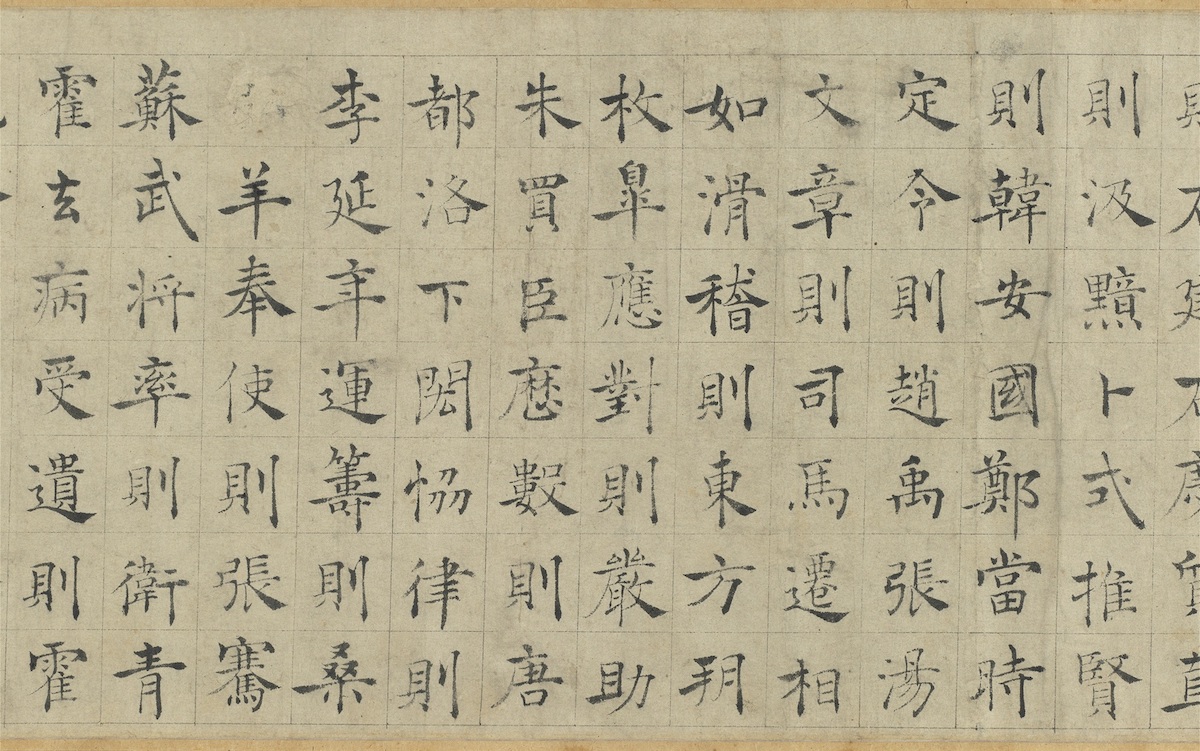
Chu Suiliang's book "Praise to Ni Kuan" of Tang Dynasty (Part)

Chu Suiliang's book "Praise to Ni Kuan" of Tang Dynasty (Part)
"Ni Kuan Zan", also known as "Er Kuan Zan", the content of this volume is taken from Ban Gu's "Book of Han·Volume 58", which tells the story of Emperor Wu of the Han Dynasty seeking talents and using them, and winning many extraordinary talents from all over the world. The end of the volume is signed "Chen Chu Suiliang's Letter". The volume is on plain paper with black silk columns and ink. It is 24.6cm long and 170.1cm wide. It is now in the collection of the National Palace Museum in Taipei. Copies can be found in "Yugangzhai Tie", "Zihuitang Tie", "Sanxitang Tie", etc. "Qinghe Painting and Calligraphy Boat", "Coral Net", "A Spectacular Life", etc. are all recorded. "Shiqu Baoji" records: The height of the post is seven inches and seven minutes, the width is five feet, two inches and seven minutes, with a total of fifty lines and seven full lines. According to Zhao Mengjian's postscript, it was written by Chu Suiliang in his later years. At the back of the volume are postscripts by Zhao Mengjian, Deng Wenyuan, Liu Guan, Yang Shiqi, Qian Pu and others. Zhao's postscript said: "Rong Yi is graceful, like a man who has attained the Tao, and there is no trace of the worldly world." The Ming Dynasty Zhan Jingfeng's "Xuanlanbian" said: "It is dry but not moist, and lacks natural interest, and the writing is like fresh energy. But it is actually weak." Zhang Chou's "Qinghe Painting and Calligraphy Boat" of the Ming Dynasty said: "Chu Henan's "Ni Kuan Zan" is the original version of Song Shilin, and it is authentic after seven postscripts by Zhao Zigu and others."
The brushwork used in this painting is flexible and natural, full of changes in weight and weight, and the words are beautiful and well-proportioned, with a peaceful and elegant feeling. Most commentators in the past believe that it was written by Chu Suiliang (596-658) in his later years. However, some scholars have pointed out that the use of taboo characters is different from the Tang Dynasty custom, and the brush used for pointillism is also different from the elegant feeling of Chu's calligraphy. The structure is closer to the European style, so it is speculated that it may have been written by the Song Dynasty.
Song Dynasty Su Shi's "Red Cliff Ode" written in front of the book
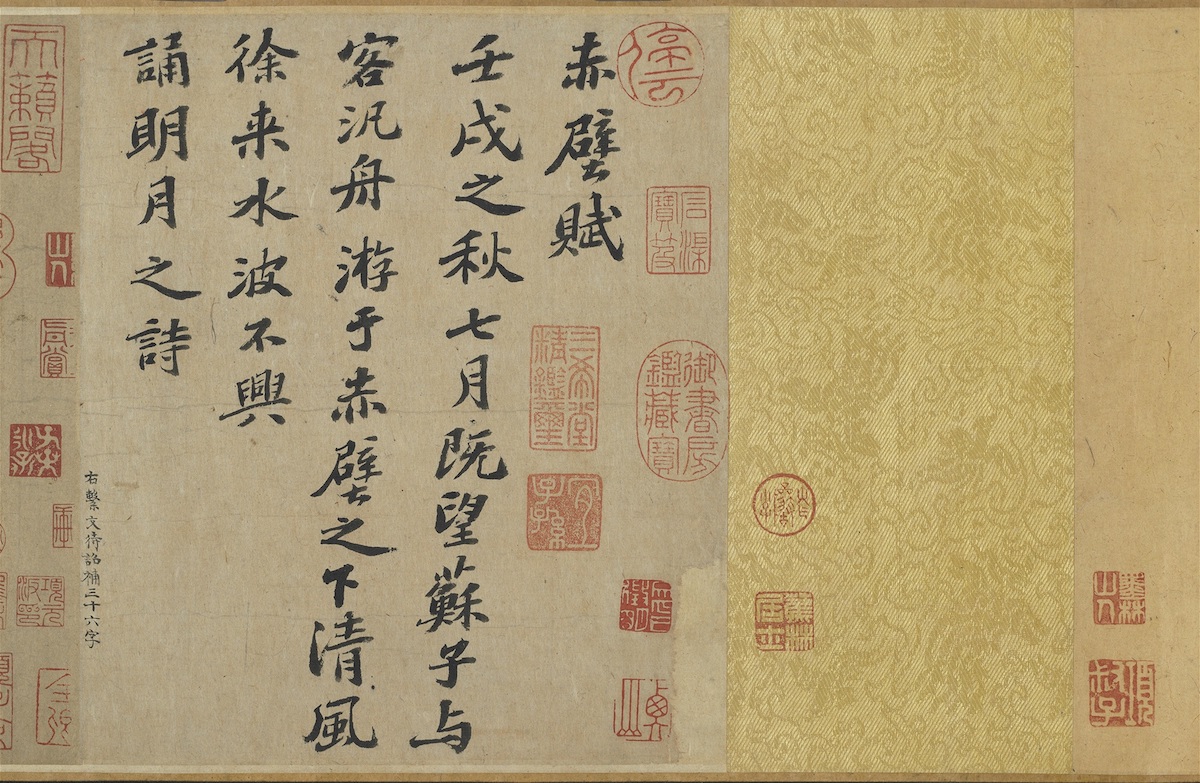
Song Dynasty Su Shi's "Red Cliff Ode" (Part)
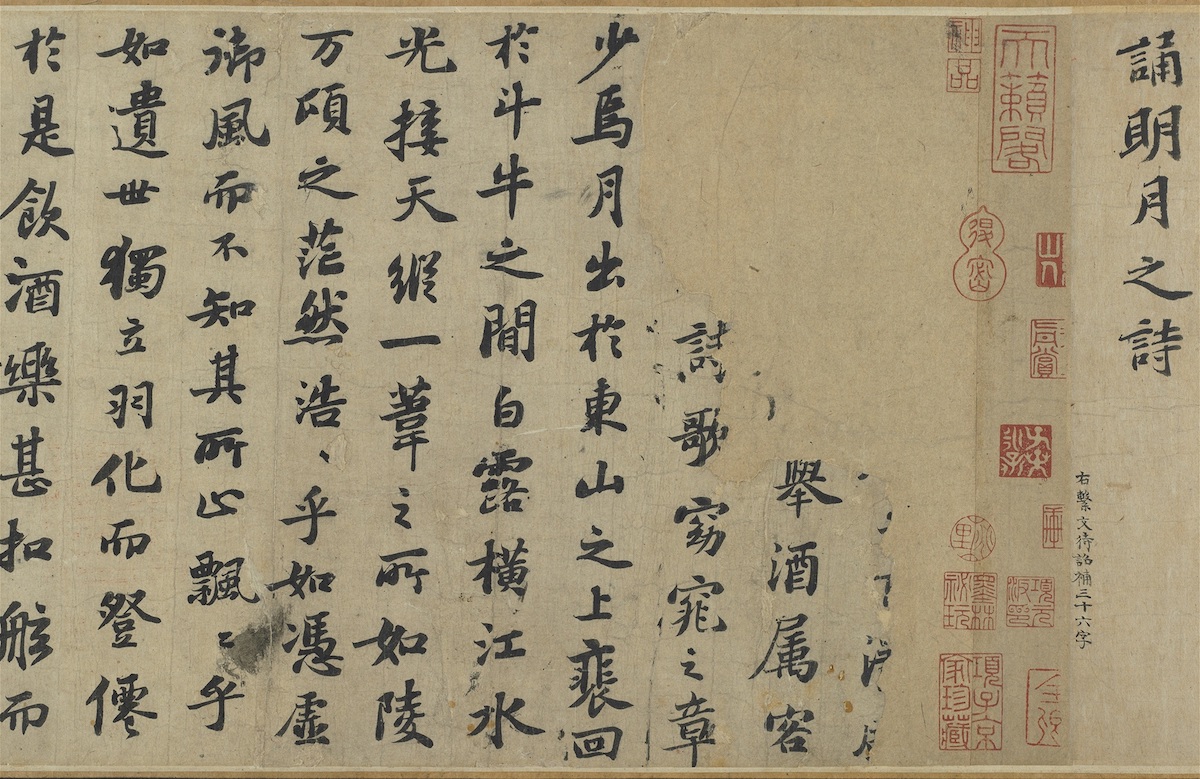
Song Dynasty Su Shi's "Red Cliff Ode" (Part)

Song Dynasty Su Shi's "Red Cliff Ode" (Part)
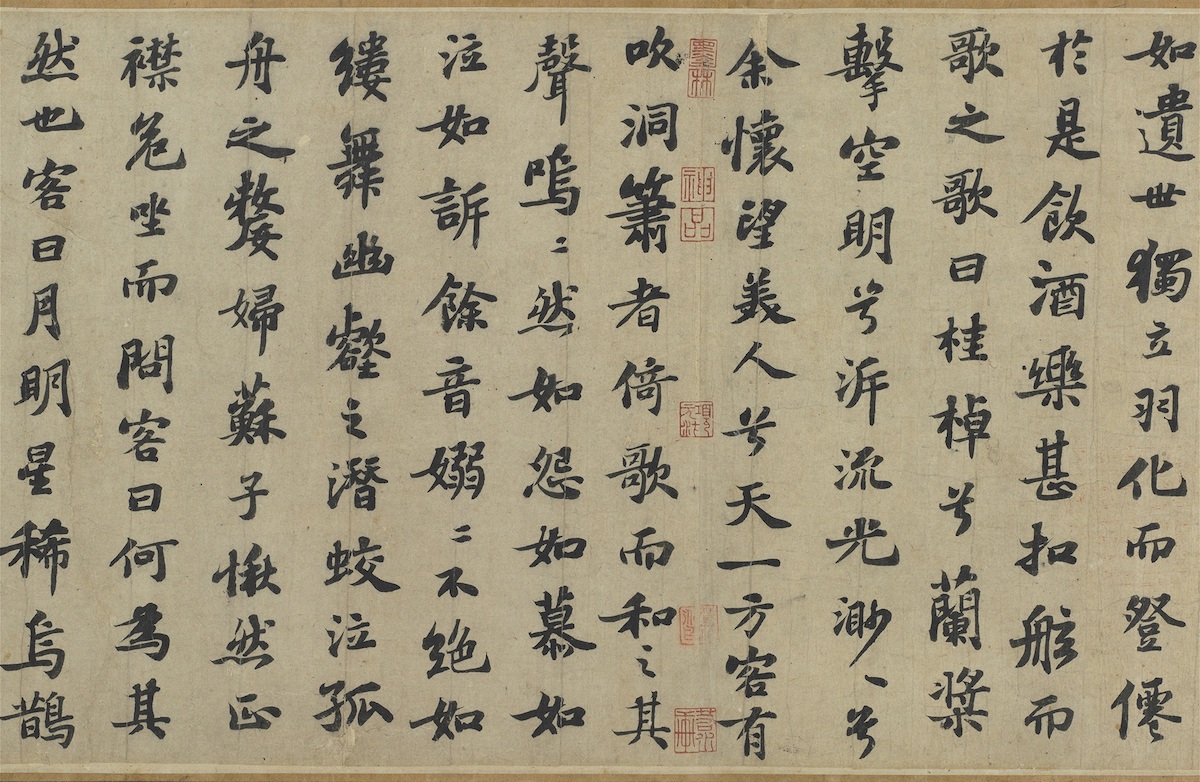
Song Dynasty Su Shi's "Red Cliff Ode" (Part)
Su Shi (1037-1101) was a native of Meishan, Sichuan. Good at poetry, calligraphy and painting, he was one of the four great calligraphers in the Northern Song Dynasty.
In 1082, Su Shi and his friends went boating twice to visit Red Cliff (today's Huanggang County, Hubei Province), and wrote two "Ode to Red Cliff", describing what they saw and felt. The writing is beautiful and full of profound philosophy. It is a famous work in the history of literature. The next year, I wrote this volume for a friend, which is the only remaining "Red Cliff Ode" written by Dongpo himself. The brushstrokes are steady and the ink color is clear and moist, making it seem peaceful and harmonious, which is very consistent with the broad-minded outlook on life expressed in the poem.
Song Dynasty Mifu's calligraphy tablets
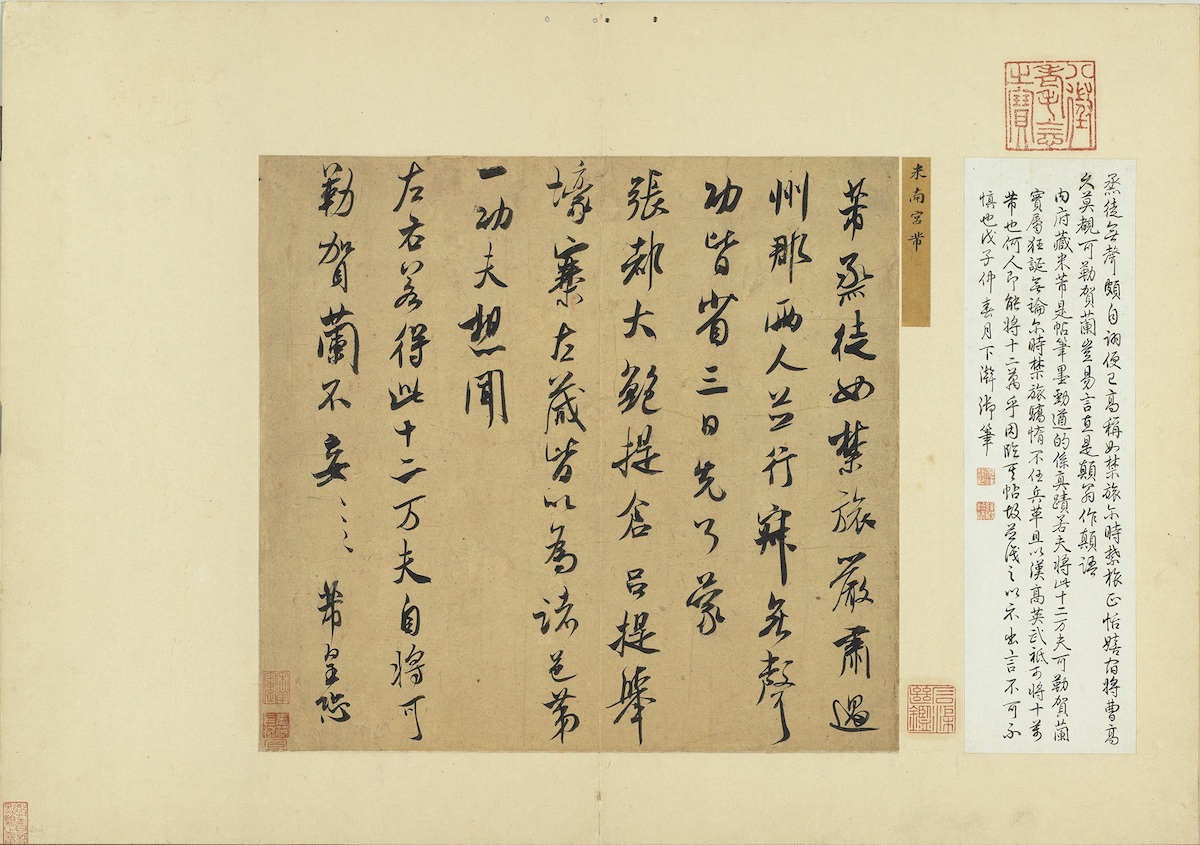
Song Dynasty Mifu's calligraphy tablets
Mi Fu (1052-1108) was born in Xiangyang, Hubei Province. The character Yuanzhang, the name Minangong, Haiyue Waishi, Xiangyang Manshi, was renamed Fu in the sixth year of Yuanyou (1091). He is good at poetry and prose, good at calligraphy and painting, and draws on the strengths of his predecessors in cursive and cursive calligraphy. His penmanship is bold and bold.
Scholars point out that this is the Baojia regiment training of Wang Anshi (1021-1086), and it is speculated that the book was written in 1105. The calligraphy of this letter is thin and vigorous, with vertical and horizontal strokes, changeable postures, sharp edges in the dots and drawings, and natural threads. It is a work of deliberate writing.
Song of Translucent Ancient Mirrors Written by Yuan Xian Yushu National Treasure

Song of Translucent Ancient Mirrors Written by Yuan Xian Yushu, National Treasure (Part)
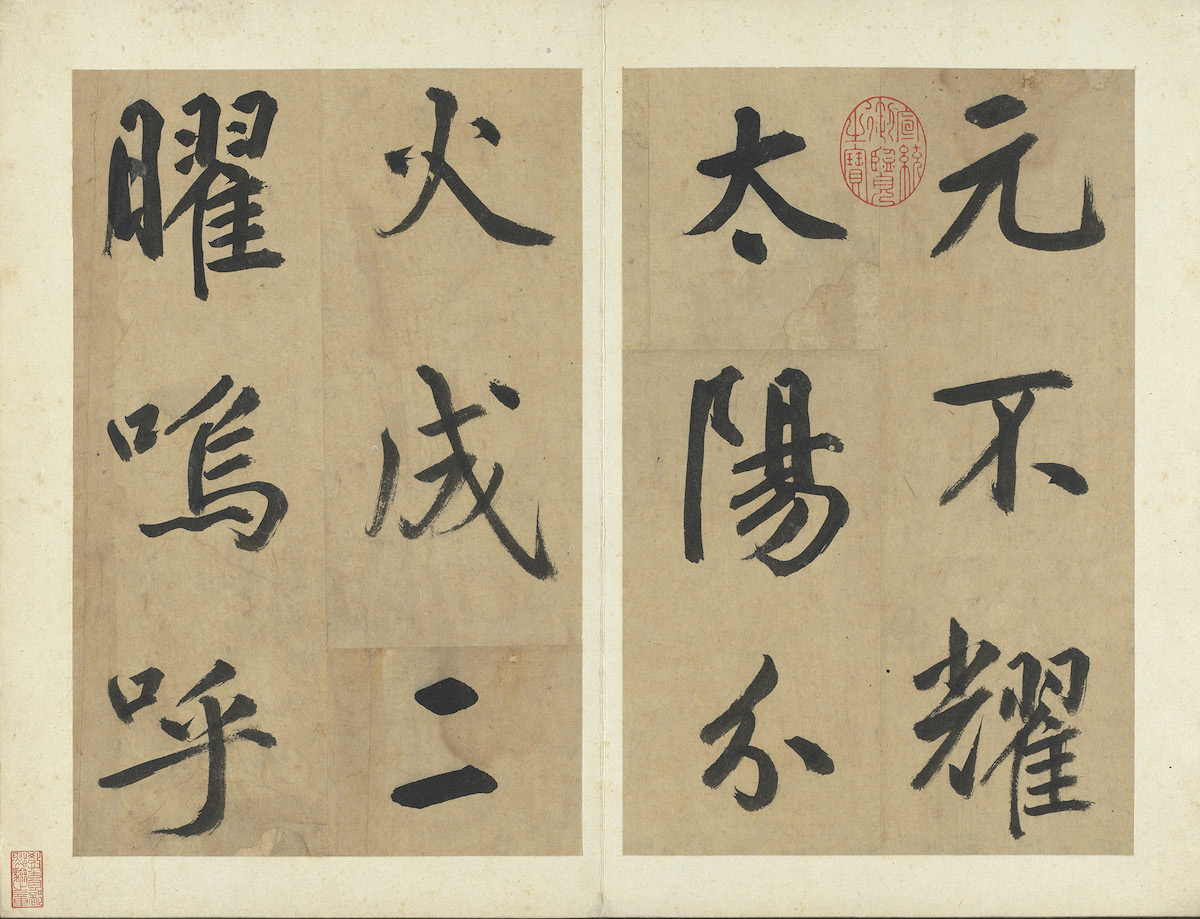
Song of Translucent Ancient Mirrors Written by Yuan Xian Yushu, National Treasure (Part)

Song of Translucent Ancient Mirrors Written by Yuan Xian Yushu, National Treasure (Part)
Xian Yushu (1246-1302) was given the courtesy name Boji and his nickname was Jiuxuemin. Calligraphy is famous for its roundness and vigor, and it advocates "retrospective" calligraphy and is called "two wonderful" calligraphy works by Zhao Mengfu.
It is said that the Xianyu family once collected a "translucent mirror", which would produce patterns on the back of the mirror in the reflected shadow. Perhaps because of this rare treasure, he wrote the golden figures in regular script in large characters. Ma Jiuchou's poem "Fu Boyu Translucent Mirror". This volume has straight characters, open posture, and powerful writing. It is one of the masterpieces of regular script handed down from generation to generation.
(This article is compiled based on the official website of the National Palace Museum in Taipei and related calligraphy materials)
